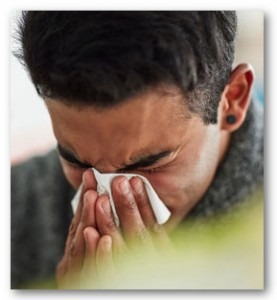
With more than 125,000 cases around the world, the new coronavirus, COVID-19, is a serious public health threat. While the vast majority of the cases (80%) have been mild, the remaining 20% of patients have been very sick indeed, and more than 4,600 have died.
Two big federal agencies that focus on employment, the Equal Employment Opportunity Commission and the Department of Labor, have issued guidance on how employers should deal with COVID-19. Here’s what they have to say:
EEOC: Anti-discrimination laws, including the Americans with Disabilities Act and Rehabilitation Act continue to apply, but they do not stop employers from following the guidelines and suggestions made by the Centers for Disease Control about steps employers should take regarding the Coronavirus.
Some EEOC FAQs: Can an employer take the body temperature of employees?
Answer: Generally, no, since measuring an employee’s body temperature is a medical examination. But, if COVID-19 becomes widespread in the community as assessed by state or local health authorities or the CDC, then employers may measure employees’ body temperature. [Note: Not everyone with a fever has COVID-19!]
Does the ADA allow employers to require employees to stay home if they have symptoms of the coronavirus?
Answer: Yes. The CDC states that employees who become ill with symptoms of influenza-like illness at work during a pandemic should leave the workplace.
OSHA: For most people in the United States, including most types of workers, the risk of infection with COVID-19 is currently low. But, for those working in healthcare, death care, clinical laboratories, airlines, border protection, solid waste and wastewater management operations, and workers who travel internationally to areas with ongoing, person-to-person transmission of COVID-19, extra precautions should be taken.
The OSHA fact sheet on protecting workers during a pandemic advises that employers should provide worker training on infection controls, including the importance of avoiding close contact (within 6 feet) with others. Employers should provide adequate supplies and ready access to soap and running water, tissues, alcohol-based hand sanitizers, and cleaning agents. Frequent visual and verbal reminders to workers can improve compliance with hand hygiene practices and thus reduce rates of infection.
FMLA: The DOL has provided FAQs on job-protected leave, addressing issues such as quarantines, that are available here.
Wage and Hour: Payroll issues that can come up because of a public health emergency are covered here. For instance, salaried employees may be entitled to be paid while in quarantine.
What this means to you:
A pandemic does not stop employment law! In addition to the EEOC and OSHA guidance, be aware that employees quarantined because of the coronavirus may be entitled to FMLA leave, that workers who contract COVID-19 on the job may be entitled to workers’ compensation benefits, that employers cannot discriminate by excluding employees from work or from of customer or client interaction, based purely on race or national origin, without evidence of illness or recent travel to a high-risk area, and that salaried exempt employees may be entitled to be paid while in quarantine.
With ongoing travel restrictions and companies asking employees to work virtually, we offer trainings both in the classroom and as webinars so your managers and employees can stay up to date on the employment law they need to know.
Updated 03-12-2020
Information here is correct at the time it is posted. Case decisions cited here may be reversed. Please do not rely on this information without consulting an attorney first.
